16 Safe Core Exercises to Perform During Pregnancy
Keeping a strong core during pregnancy is so important and will help decrease your back pain, SI join pain, setc and will add in labor, delivery and recovery. Although this is true, there are many things to remember while doing core that need to be taken seriously so you do not worsen things like “diastasis recti” which can lead to issues for you postpartum and beyond.
Here are a few things to remember when exercising during pregnancy:
If you haven’t exercised before getting pregnant, that is okay! You can start at any time just be sure to start slow and see how you feel, so you do not overdo it (5).
During the first trimester, if it feels okay, you can continue with your normal fitness routine.
In the second and third trimesters, it is recommended to reduce the intensity of your workouts and to start modifying things such as supine core exercises, jumping and high impact activities.
It is not recommended to do exercises in a supine position (lying on your back) for long durations after the first trimester (3).
Avoid exercising in conditions that are too hot or humid because it could increase your body temperature, and lead to dehydration or other adverse things.
Do not overdo certain abdominal exercises as it can lead to an increase pressure in the core (4) especially the obliques!
Avoid doing any exercises that involve abrupt movements, twists or turns.
most important core to work is the transverse abdominis (the muscles closest to the baby!) natures support belt!
**It may seem repetitive, but before you begin any new workout routine, be sure to talk with your doctor. In addition, I do not recommend checking for diastasis recti (DR) during pregnancy as it is inaccurate– it is normal for our core (the rectus abdominis) to separate during pregnancy to make space for baby but postpartum. you can do a DR check — I explain exactly how to do it here.
Best Abdominal Exercises To Perform During Pregnancy
Caution: Consult your doctor before starting
During pregnancy, it is so beneficial to stay active and moving as much as you can. One thing I see is my clients cutting out core exercises, because they have heard they are not good. Although this is partly true, there are many beneficial and safe abdominal exercises to continue to! Here are some exercises you can do during pregnancy:
1. Sitting knee lift
I recommend using a chair, sitting on the edge of your couch or on an exercise ball.
How to:
sit near the edge of your chair.
Keep your feet flat on the floor directly under your knees.
Keep your palms facing downward under your hips.
Slowly contract your abdomen by bending your left knee in such a way that it tilts your pelvis and activate pelvic floor .
Then, slowly bring your left knee towards your chest as you exhale.
Inhale and lower your left foot to the floor back to your staring position.
Repeat with your right leg.
I recommend doing 2-3 sets of 8 to 12 reps. In the first trimester you can also add light weights (2 to 5lbs) on each ankle.
2. Side-lying crunch
How to:
Lie on the floor or mat.
Slowly roll your body to the left side and bend your knees at a 30 degree angle to your hips.
Roll the body towards the right side so that your knees rise about 6in from the floor.
Ensure that your body weight rests on the back of your left shoulder and the shoulder blade.
Put both the hands behind your head with the fingertips touching (but don’t pull neck).
Curl your torso upwards in a diagonal position as if you are trying to touch your right knee. lift as high as you can.
While doing the above steps, your left shoulder will rise a little from the floor.
Bring your arms towards the knees and curl them a bit higher.
Then place your hands behind the head and lower yourself to your original position.
Repeat this on the other side.
Perform 2 sets of 10-12 reps on each side.
3. Core breathing
This is a very simple yet effective core exercise.
How to:
Stand or Sit down comfortably keeping your back straight.
Position one hand on your waist or belly, one on your chest.
Take a deep breath and feel your ribs expand (about 5-10 count inhale).
Exhale the air (5-10 count) and bring your ribs back to one closing position.
Relax your muscles by contracting the front of your pelvis and the tailbone.
Repeat for 10 rounds of deep breathes.
4. Seated ball stability hold
similar to bird dog on the ground, except you are seated on an exercise ball.
How to:
Sit on a stability ball sitting up nice and tall.
Put your hands on each side of you to maintain balance.
Inhale from the core as you lift your right foot off the ground and raise your left arm up over your head.
Hold for two to three seconds and return to the starting position.
Repeat with the right arm and left foot.
aim for 2-3 rounds of 10 on each side
5. Side plank/Modified side plank
Side plank can be done in several ways. these are a few options during pregnancy.
How to:
starting on your side place your elbow directly under the shoulder.
Bend the knees and stack them on top of one another, one straight/one bent or straight out if it feels okay and no coning.
Keep your spine neutral back flat and concentrate on your core breathing.
Squeeze your hips and raise your torso to make it a straight line from head to hips while you keep your head and neck straight.
Hold the position for 20 to 30 seconds and remember to breathe.
Repeat on the other side.
6. The standing crunch
This is just like a crunch you would do while lying down, but safe for all trimesters .
How to:
Stand straight with your feet hip distance apart, knees slightly bent and hands behind your head.
Inhale pull your belly button in and tuck your pelvis
Exhale, and crunch forward squeezing your abdominal muscles just the way you do it while lying on your back.
Aim for 15 to 20 repetitions.
7. The standing bicycle
This is an excellent exercise to help improve your balance and strengthen your core.
How to:
Standing with your feet hips width, hands behind head, inhale
Then exhale bring your left elbow to meet your right knee as you crunch
Go back to the original standing position and repeat it with your left foot and right elbow.
Aim for 10 to 20 reps
8. Kegels
“Kegel exercises help tone the pubococcygeal (PC) muscle, which controls urine flow, supports your growing baby, prevents hemorrhoids, keeps the muscles of the vagina toned, and assists in delivery (1).”
How to:
Sit down comfortably on the exercise ball and inhale nice and full. While you are breathing in, let your belly rise as you fill up with air. Once you have inhaled enough, slowly exhale to let all the air out.
aim for a 5-10 count inhale that matches your 5-10 count exhalation length.
The next time when you exhale, try to tighten your vaginal muscles. It should resemble the tightening of muscles when you badly need to pee but are forced to hold.
Relax your neck, face, and shoulders. At this point, only the muscles of your pelvic floor should feel tight and contracted. Hold the pose to the count of five to eight and then slowly release.
Try and do this 20 times per day, and aim to increase the count gradually.
9. Squat
Some might not know that this is a good ab exercise if done correctly and it can also help you prepare for the pushing stage of delivery.
How to:
Stand straight with feet hips distance
Raise your arms straight in front of your chest.
Inhale as you squat down, weight in your heals, keep your knees from buckling in.
pause at the bottom and then exhale as you rise to standing position.
Try doing 2-3 sets of 15 reps each.
10. Cat cow pose
This helps to strengthen the core muscles and increases the flexibility of your back and spine.
How to:
start on the floor on your hands and knees in tabletop position (hands directly under your shoulders and your knees under your hips).
Inhale and look upward and arch your back, let your belly hang.
Then exhale, tuck in your chin and your tailbone, and draw your belly inward towards your spine.
Keep doing the inhaling and exhaling exercise in such a way that you can match your breathing rhythm to your movements as much as you can.
Repeat the steps for around two minutes, take a break and resume.
11. Side-lying leg lifts
It helps strengthen your core, glute and hip muscles.
How to:
Lie down on your left side with your legs stacked one on the other. Keep your left elbow on the ground so that it can support your upper body.
Now lift both your legs (advanced and more just first trimester) or just your right leg slowly. Lift it as high up as you can. Make sure that your hips are in a straight line with your body.
Bring your leg down to about two inches above your left leg.
Do about 20 repetitions with each leg and keep doing it until your legs start to feel tired.
12. Bird dog crunches
This is a stability exercise that strengthens your abs.
How to:
Start in tabletop position (wrists directly under your shoulders and knees under your hips, back straight.)
tighten core and slowly inhale and lift your left leg and extend it in a straight line behind you while you also lift up your right arm straight in front of you.
exhale bring left knee to meet right elbow in the middle
inhale return and repeat for 10-12 reps
Then repeat the same steps with your opposite hand and leg.
13. Standing pelvic tilt
It is a good exercise to help improve your posture and to strengthen your back and abdominal muscles.
How to:
Stand straight near a wall and place your back and hips against the wall.
You will notice a small space between the wall and your lower back.
Next, contract your abs and tilt your pelvis. your hips You should feel your lower back flattening itself against the wall.
Hold this pose for five seconds and release and try and complete ten times.
14. Hip hiker
It helps strengthen the glute and hip muscles.
How to do:
Lie down comfortably on your side.
Bend your bottom leg while keeping your top leg straight. If you feel uncomfortable, make use of a pillow to support your head.
Now raise your top leg about 2 to 4 inches from the ground.
Keep your leg straight. Use the muscles on the side of your abdomen to pull your hip.
Hold the position for about five seconds.
Repeat the steps ten times.
15. Heel slides
How to:
Start on the ground in a glute bridge position
Lifting your heel a little above the ground, extend one leg at a time.
Slowly come to your original position. (can be done with a glider or towel under heel)
Repeat on the other leg.
16. Engaging your TA
is safe for diastasis recti.
How to:
Sit straight or stand and take a deep breath while one hand is on your belly button.
Inhale deeply till you feel your belly button and lower rib cage expanding, without raising your shoulders.
then exhale drawing your belly inward while contracting your TA.
Perform 5-10 repetitions by controlling your breath.
*You must consult your doctor before beginning with any exercise regime as they can advise you on the exercises to do depending on your overall health condition.
Hope you find these pregnancy safe core exercises helpful! xoxo let me know if you have any questions
Needing more guidance for exercising while you are pregnant?
This is for you!
The Complete Pregnancy Workout Guide includes a 12 weeks, of moderate to low-impact workouts that can be followed and repeated throughout each trimester, nutrition recommendations, exercises to help keep core and pelvic floor strong, preparing for labor/delivery and more with over 80 pages of the most up-to-date information!
In the beginning you will work to create a solid foundation to tone muscle, increase circulation, and endurance.
As the weeks progress, you will work to increase your strength and stability and help minimize pregnancy aches and pains.
Staying active will not only boost your stamina and strength, but can relieve stress and prepare for delivery.
Each week includes resistance and strength training as well as active recovery and yoga. Active recovery includes prenatal yoga and core workouts to get your body ready for delivery to meet your sweet baby or babies!
When to Start Pregnancy Exercises
The best time to start pregnancy exercises is when you discover you are pregnant.
The second best time to start pregnancy exercises is now. Of course, get the green light from your midwife, OB-GYN, or doctor before beginning any pregnancy exercises.
This 12 week workout plan has exercises that are safe throughout your entire pregnancy and can be done from home or anywhere!
Over 100 different exercises with photo and/or videos.
PDF format that is available to use on iPhone/iPad/Android/Kindle/Computer.
Equipment needed: Dumbbells and loop band
Let’s get #Sweatyasamother together
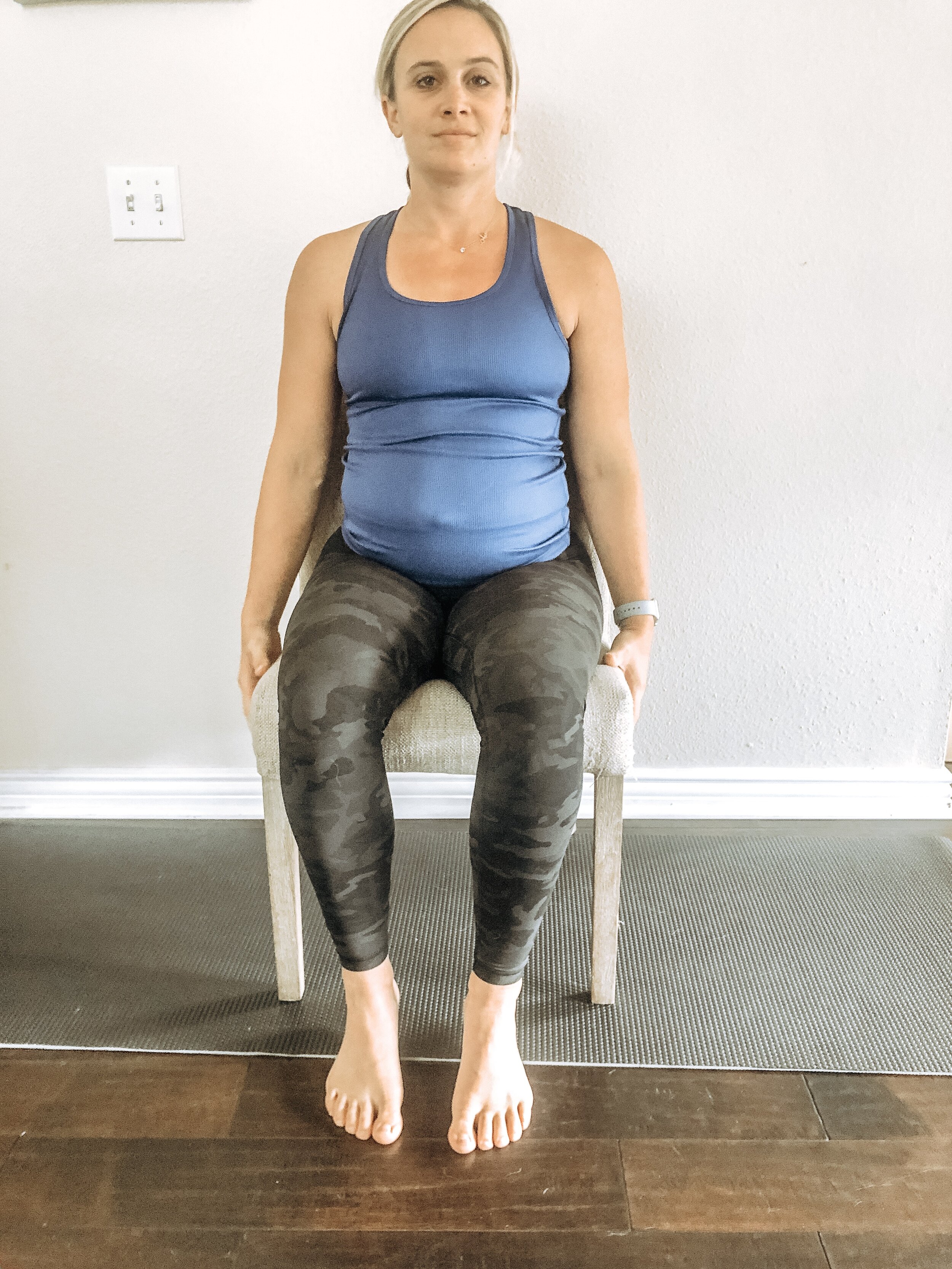
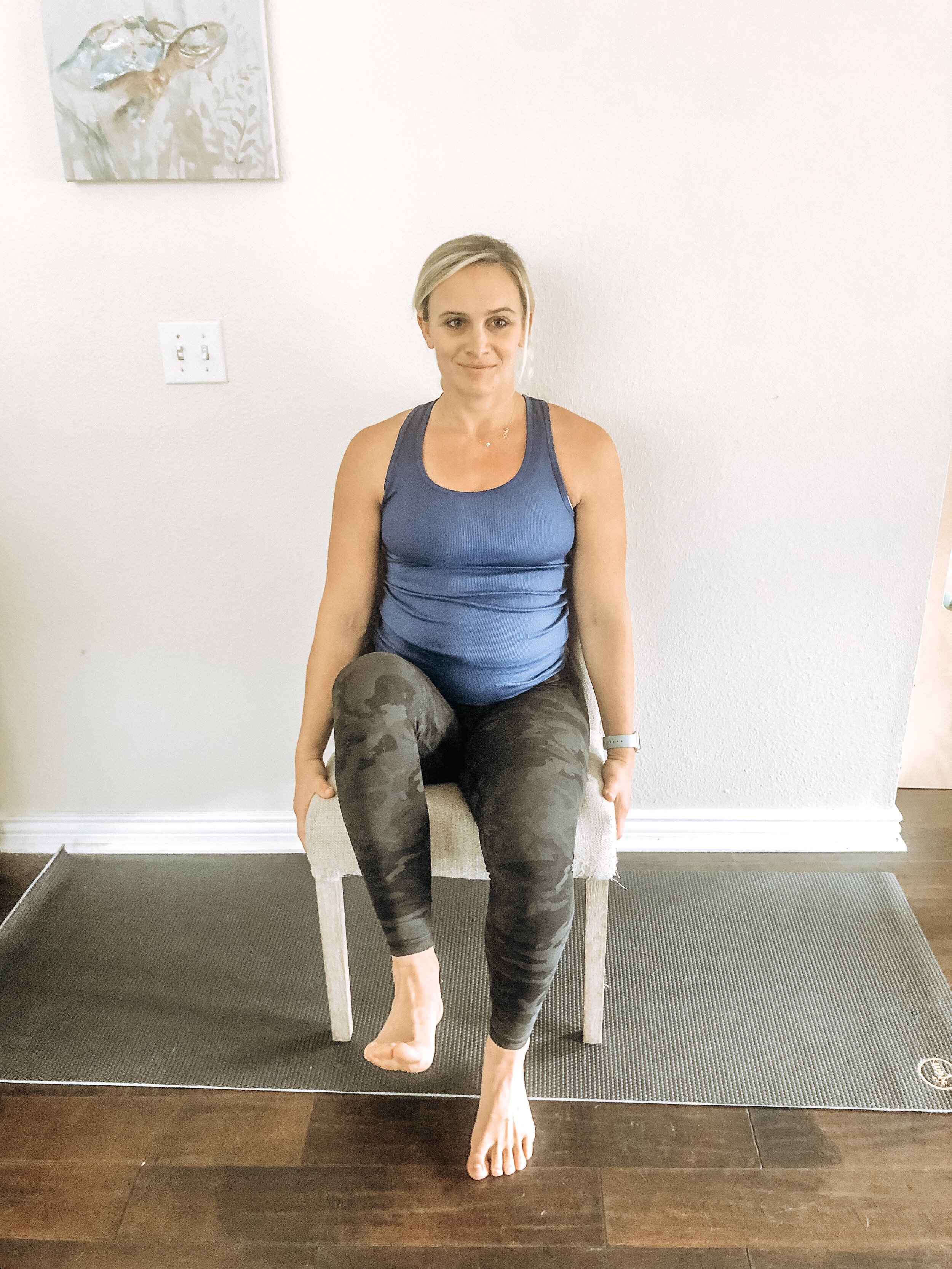
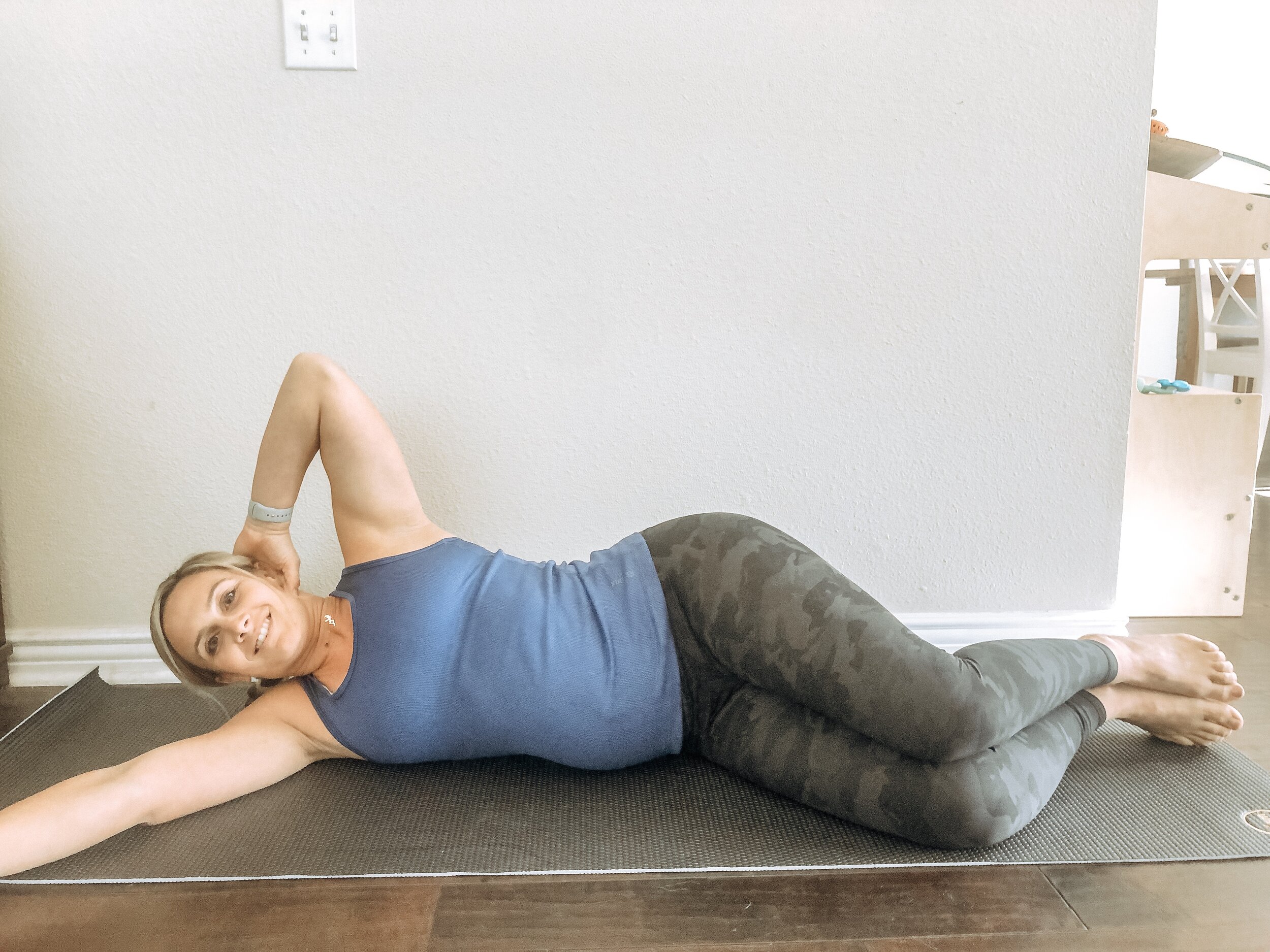

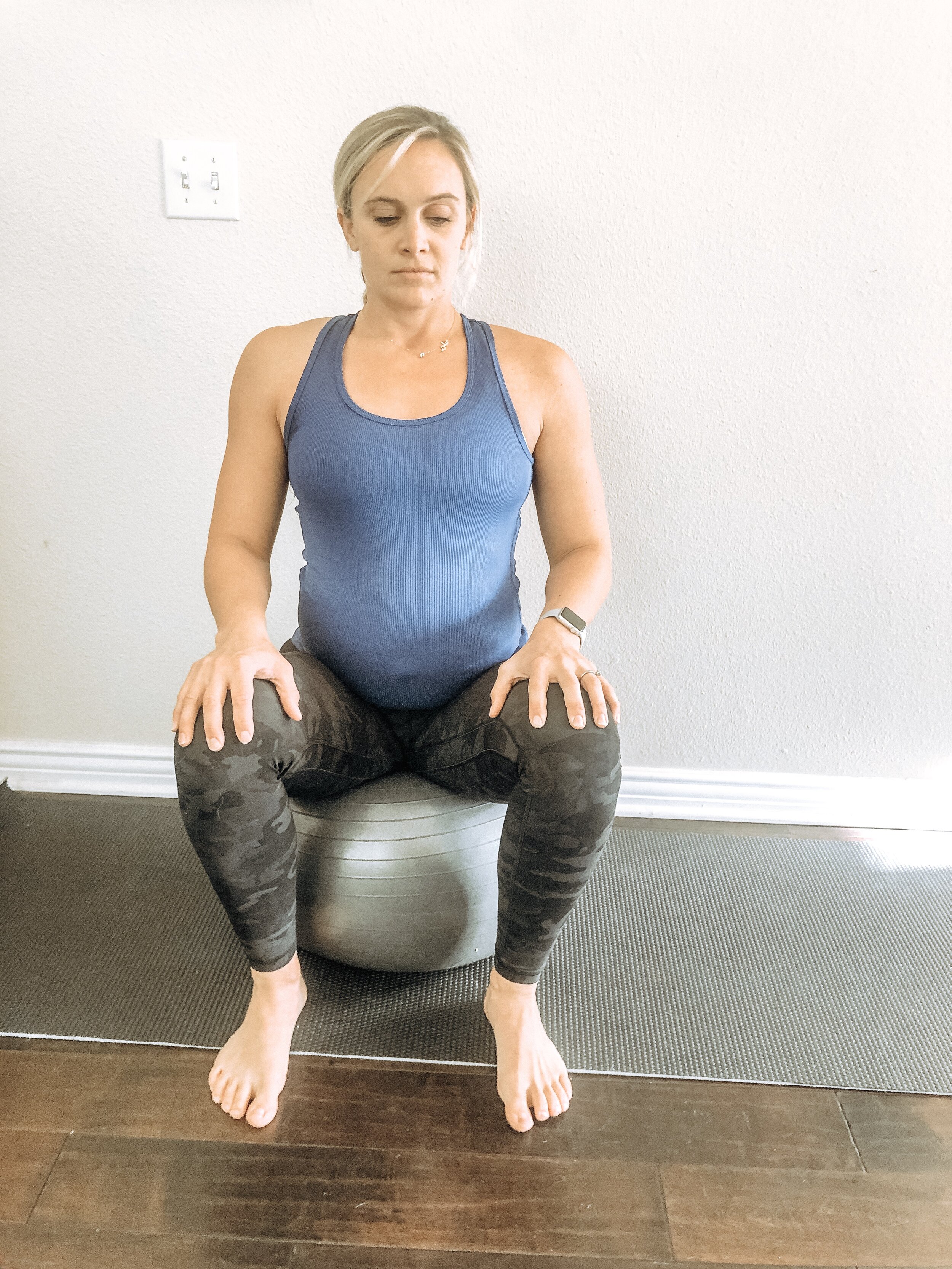





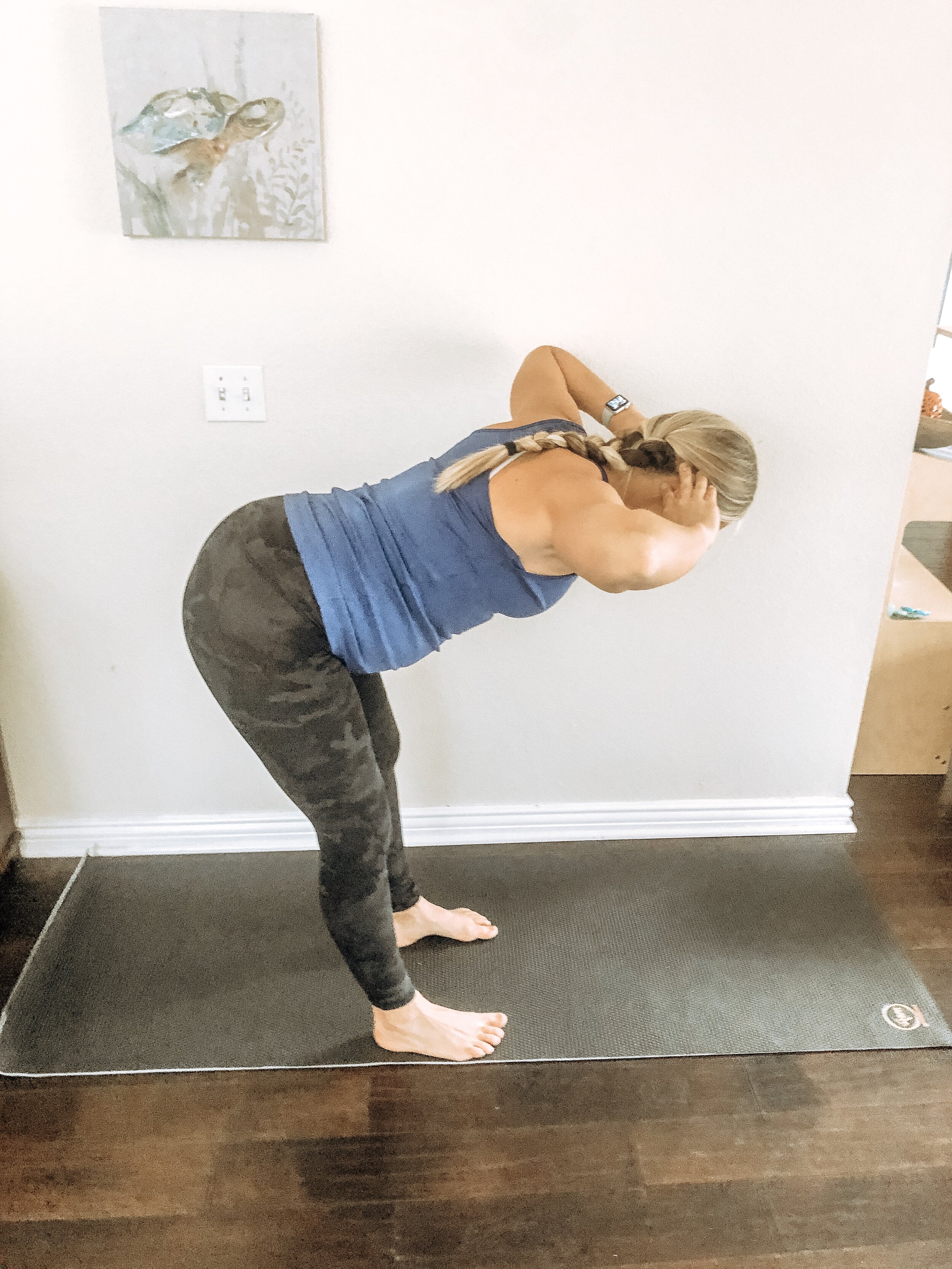
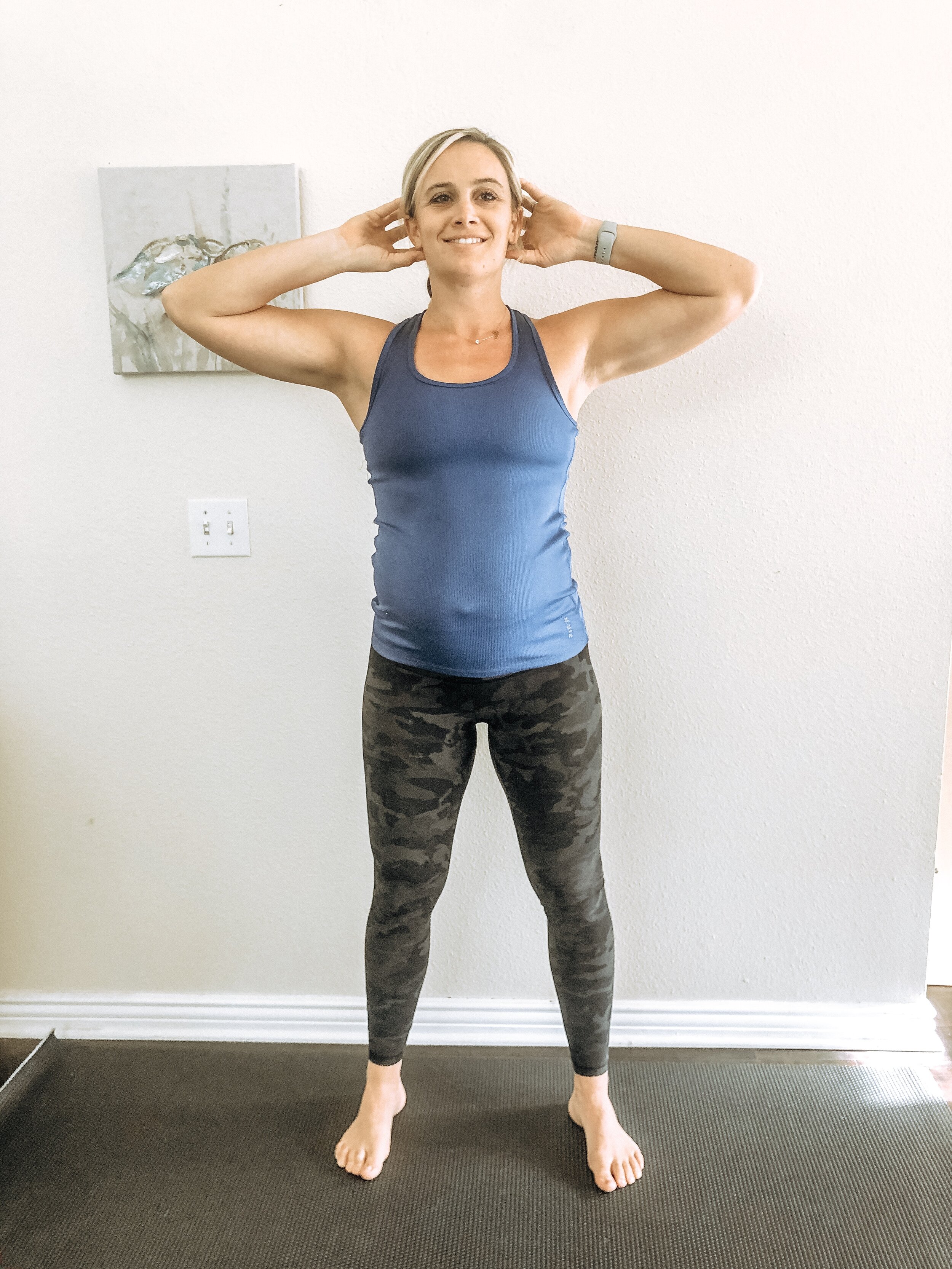




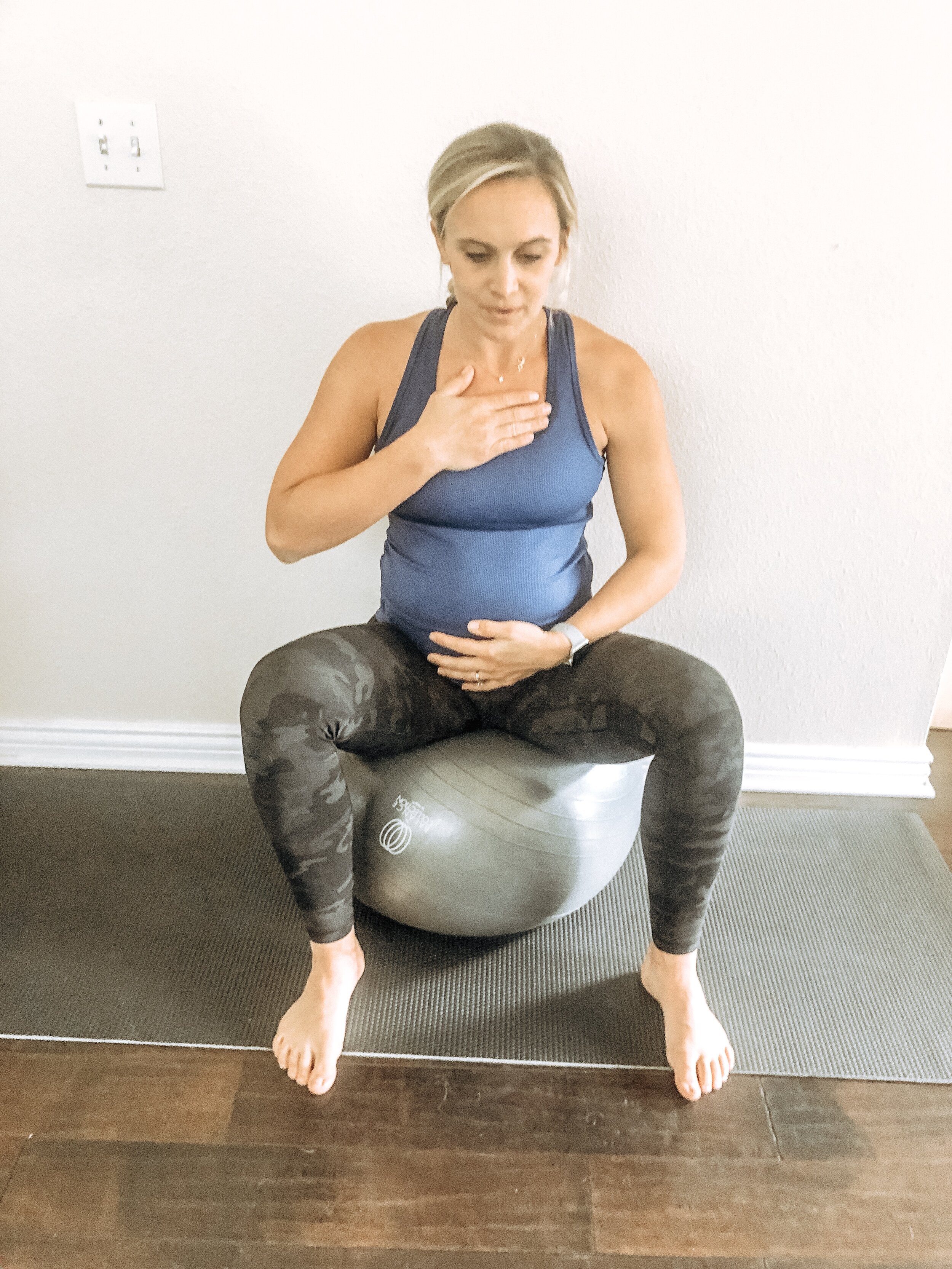











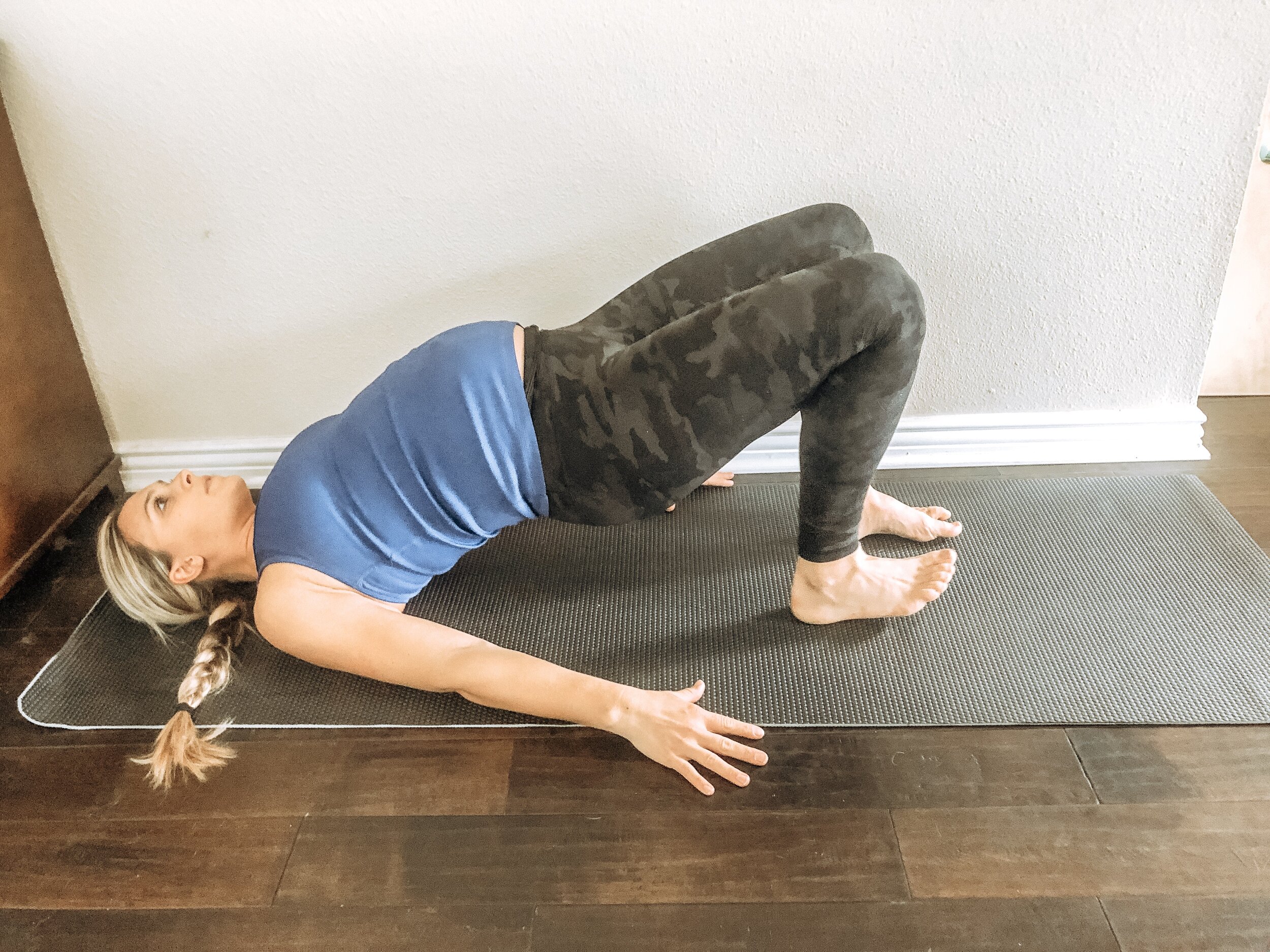
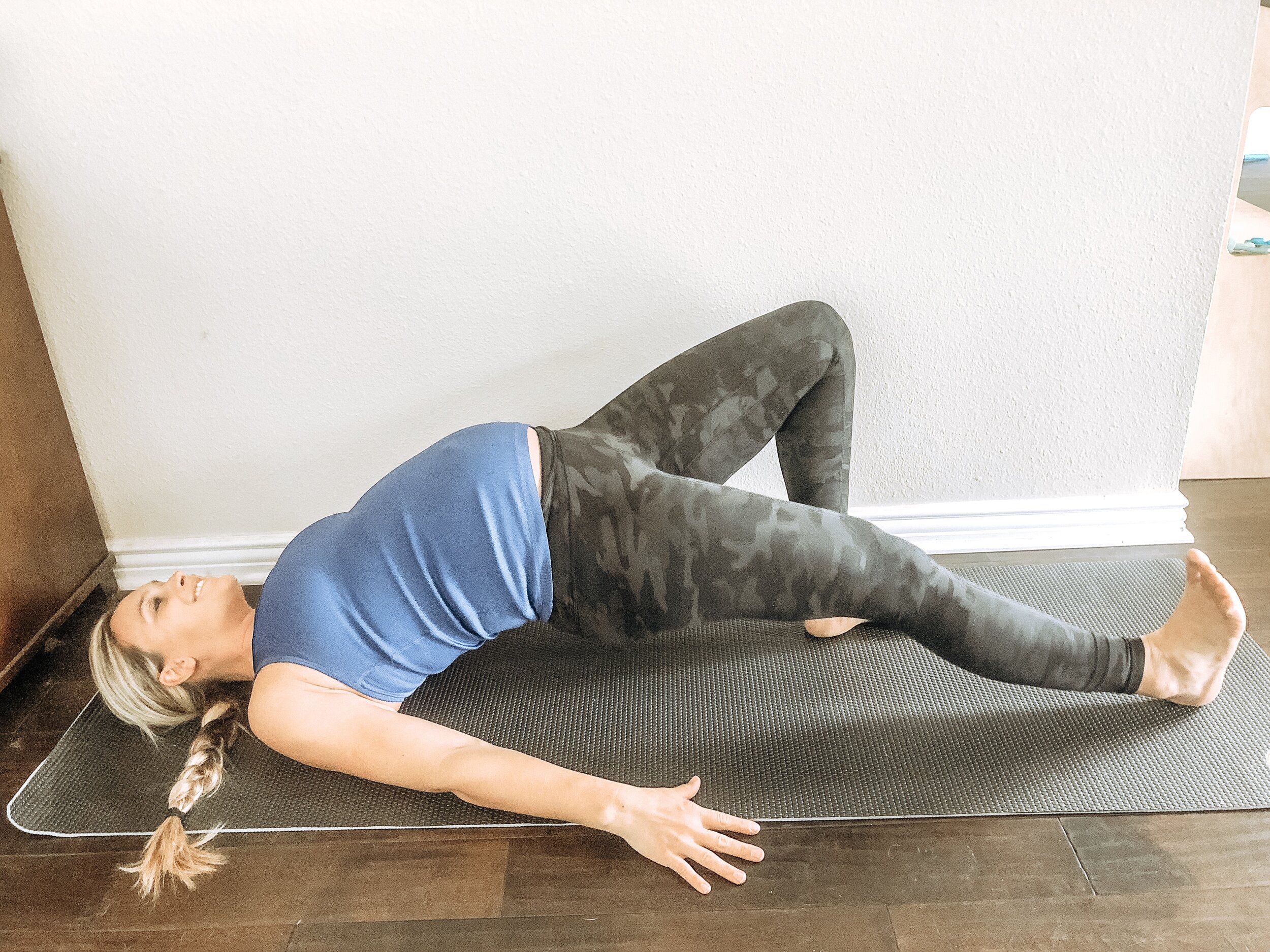


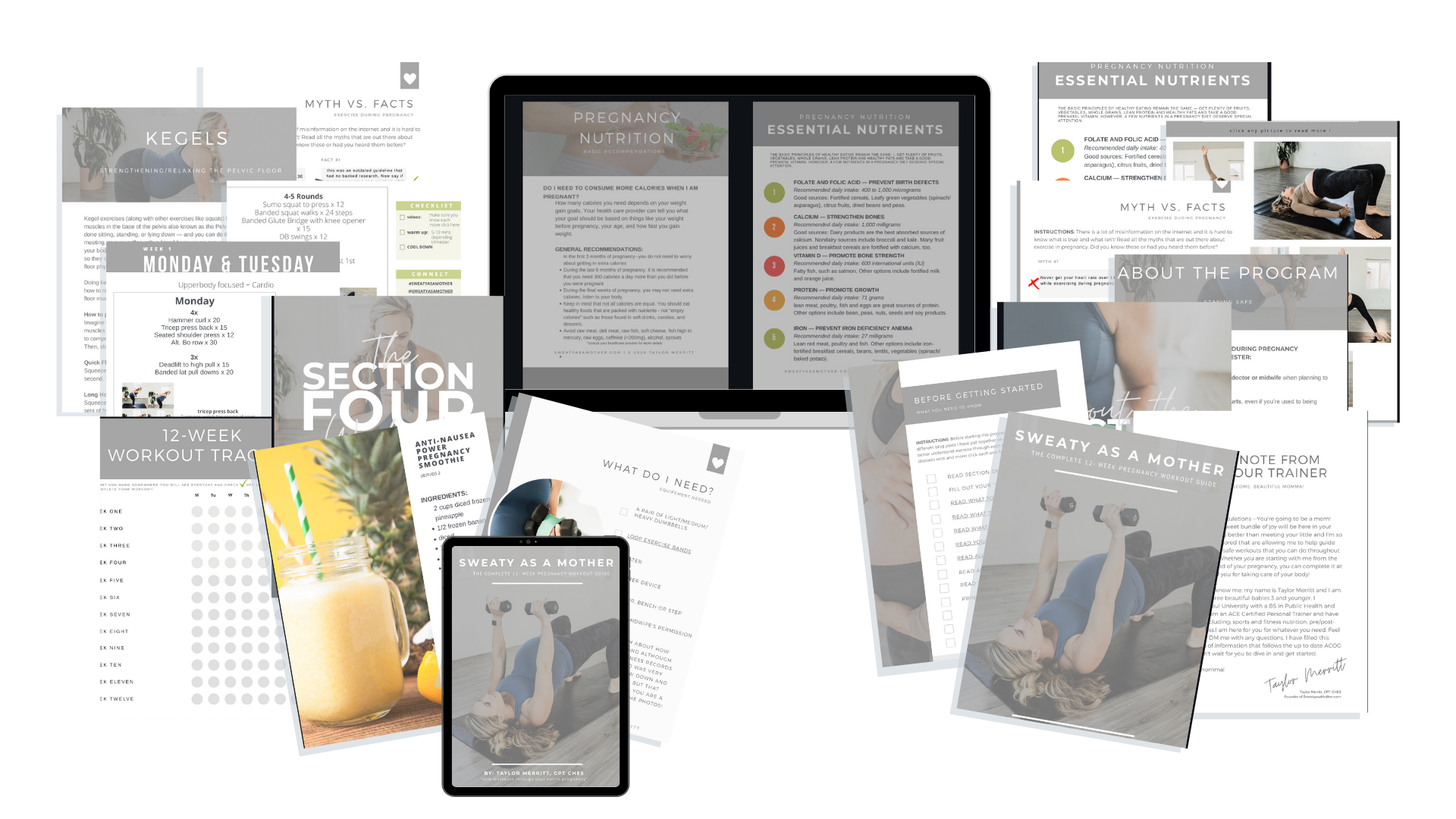










If you feel sharp, hot, or pinpointed pain right over the bony part of your outer hip during pregnancy, it’s very likely you have bursitis. You will be most symptomatic with lying on your side, walking, standing on one leg, or putting any pressure over the bursa.